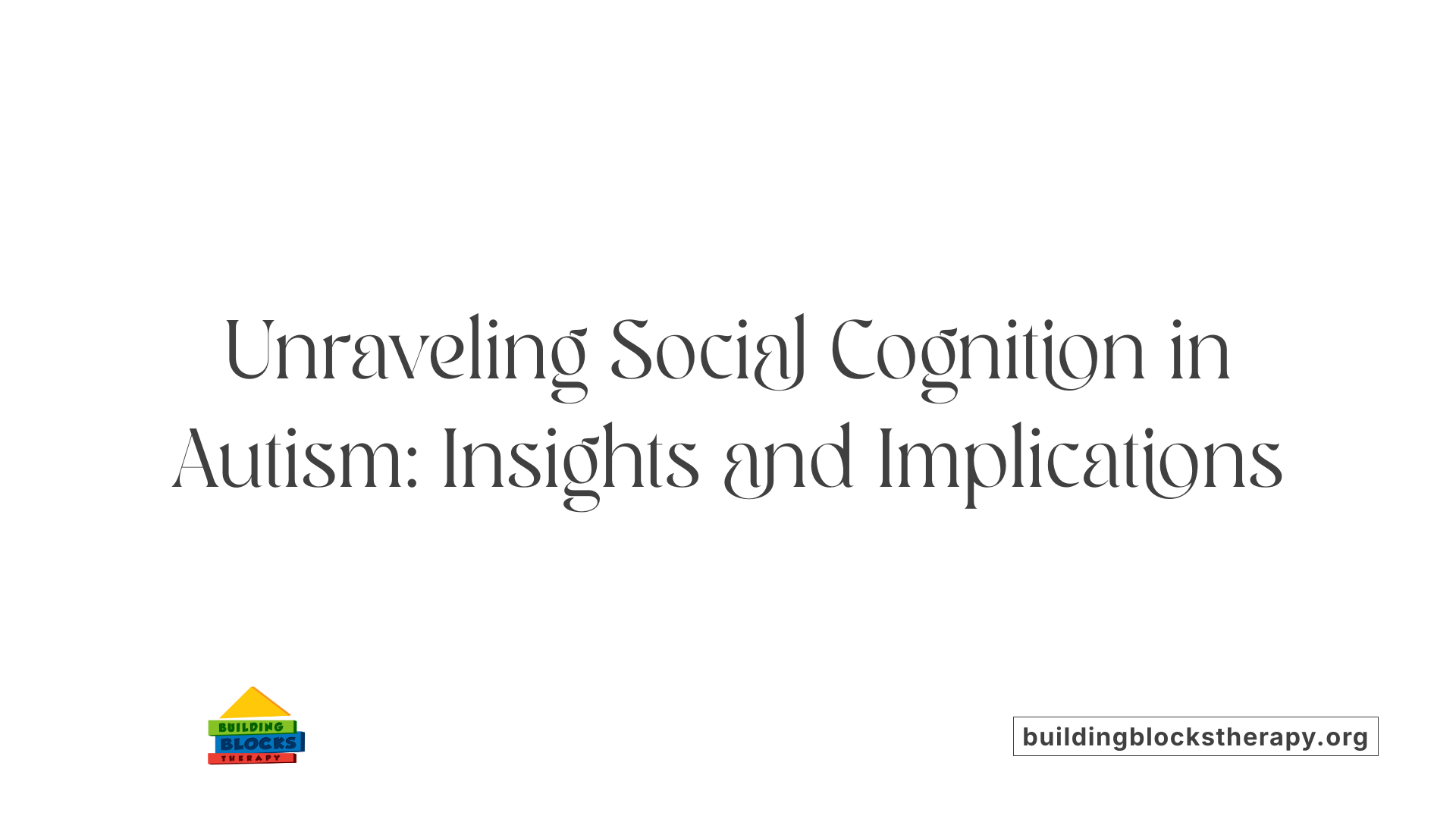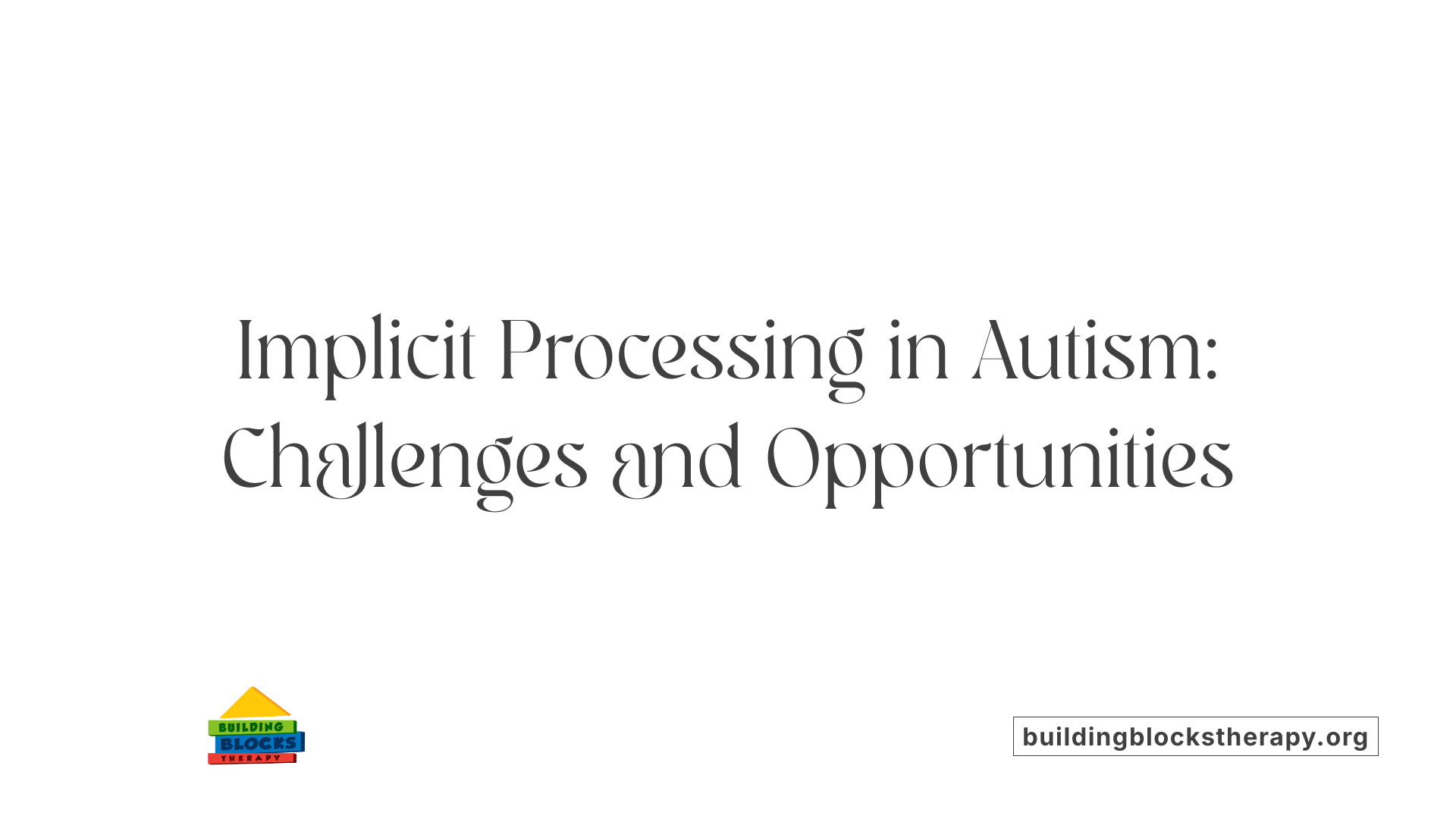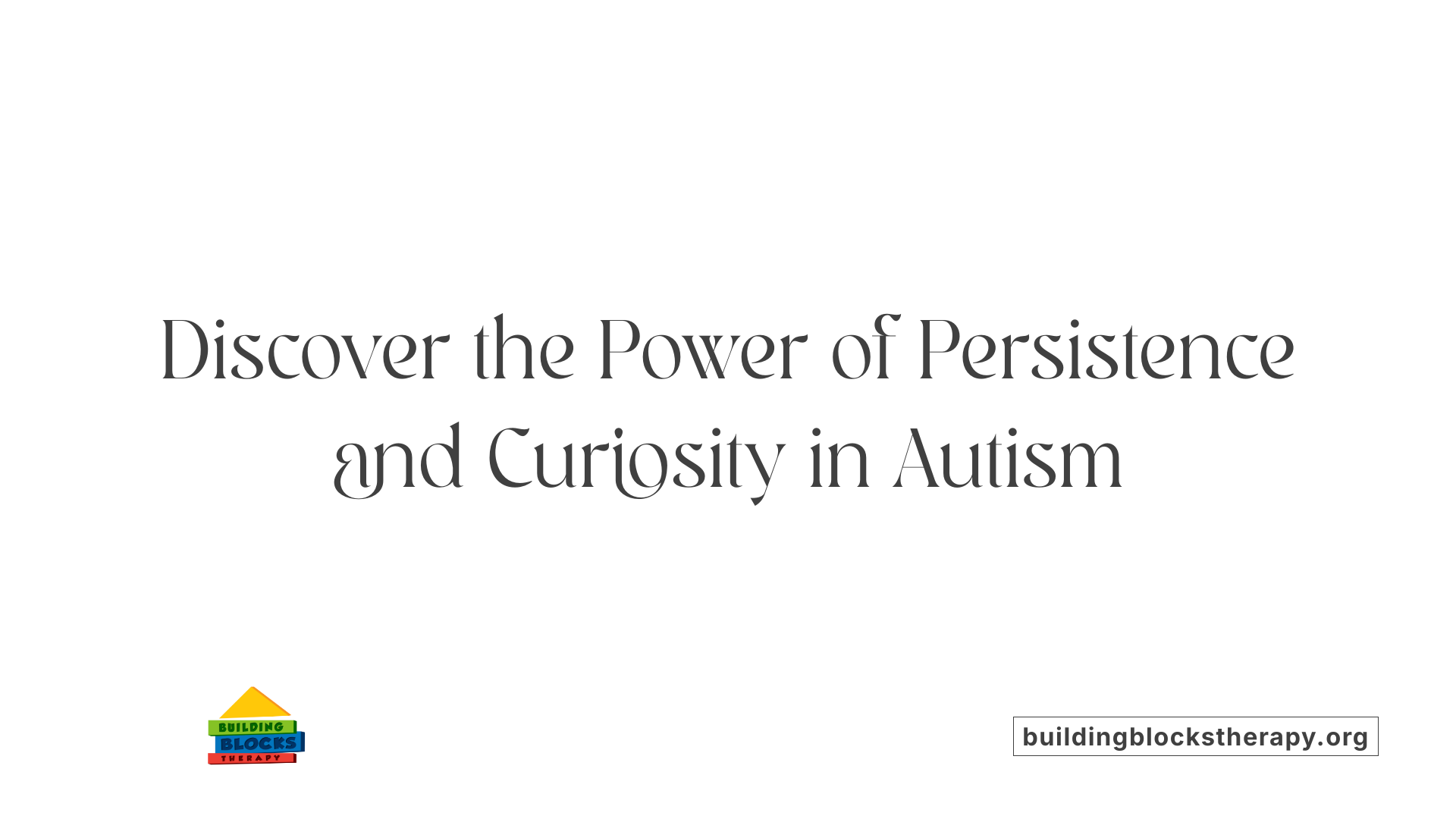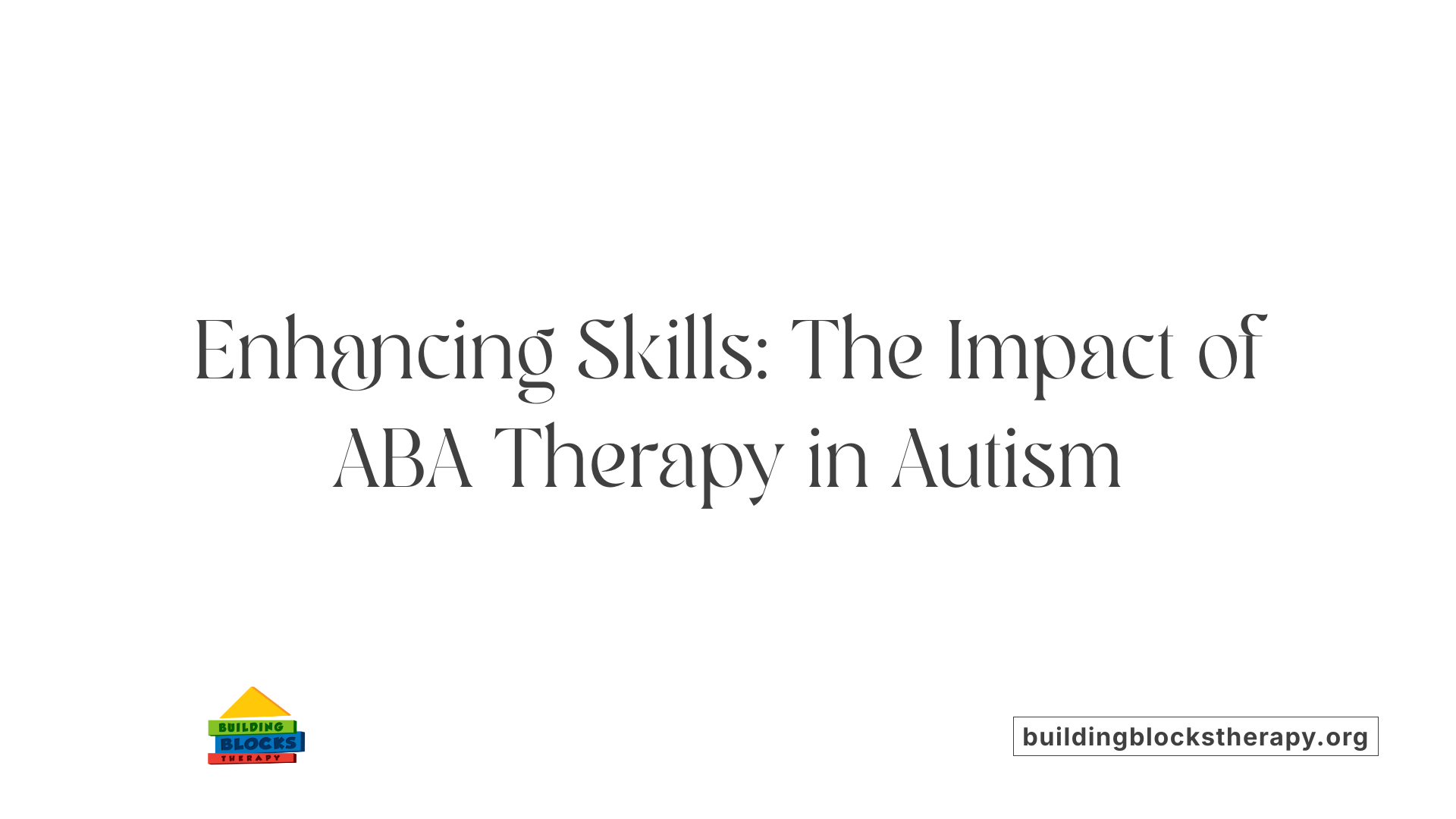Why Are People with Autism So Smart
Unraveling the Cognitive Strengths Behind Autism Spectrum

Exploring the Intelligence and Unique Abilities of Autistic Individuals
Autism is often misunderstood, and its association with intellectual ability is sometimes clouded by stereotypes. Yet, a growing body of research highlights unique cognitive strengths that many autistic individuals possess. This article delves into the scientific insights addressing why people with autism are perceived as smart, examining the neurological, behavioral, and therapeutic factors that contribute to their distinctive ways of learning, thinking, and interacting.
The Neurodevelopmental Basis of Autism and Cognitive Ability
Autism as a Neurodevelopmental Condition
Autism is recognized as a group of neurodevelopmental conditions primarily affecting social interaction and communication. It is characterized by restricted and repetitive behaviors, alongside differences in cognitive processing. These features emerge early in development and influence how individuals perceive and engage with their environment.
Genetic and Environmental Influences on Autism
Genetic factors play a major role in autism, with heritability estimated around 80%. Hundreds of genes implicated in neurodevelopmental pathways, including synaptic signaling and chromatin remodeling, contribute to autism's complex genetic architecture. Both rare spontaneous mutations and common polygenic variants shape core autism traits. Environmental factors also contribute, explaining approximately 40% of risk variance. These include advanced parental age, maternal autoimmune conditions, infections during pregnancy, and prenatal exposure to pollutants. Protective influences such as prenatal folic acid supplementation may mitigate risk.
Neurological Pathways Impacting Cognition in Autism
Structural and functional alterations in neural circuits underlie cognitive features of autism. Changes in the social brain network—such as reduced amygdala activation and disrupted connectivity—affect social cognition and implicit processing. Genetic studies reveal convergence on synaptic transmission pathways, highlighting key neurobiological mechanisms. Emerging research on neuroinflammation and immune activation further elaborates autism’s neurodevelopmental basis. Together, these insights frame autism as a complex interplay of genetics, environment, and brain connectivity that shapes cognition and behavior.
Understanding Social Cognition Differences in Autism

How is social cognition altered in autism and what impact does it have?
Research consistently shows that individuals with autism exhibit altered performance on social cognition tasks compared to neurotypical individuals. These alterations are subtle but robust, influencing core features of autism. The most significant challenges appear in implicit social cognition—automatic, unconscious social processing—that underpins many social interaction difficulties faced by autistic people.
What are the differences between implicit and explicit social cognition in autism?
In autism, implicit social cognition is particularly impaired. This domain involves spontaneous understanding of social cues without conscious effort, critical for real-world social interactions. Explicit social cognition, on the other hand, relates to consciously recognizing and interpreting social information. While autistic individuals can often compensate in explicit tasks, these compensations may fail under demanding social conditions. Thus, difficulties with implicit processing largely explain everyday social challenges.
How does the social brain network contribute to social cognition differences in autism?
Impairments in social cognition are linked to changes in the social brain network. Key regions such as the amygdala show under-activation, and there is disrupted connectivity within neural circuits responsible for social processing. This altered neural function provides insight into behavioral observations and offers potential targets for therapies aiming to improve social functioning.
This nuanced understanding emphasizes the need to focus on implicit social cognition and neural network functioning when developing interventions to support autistic individuals in social environments.
The Role of Implicit Processing in Autism’s Cognitive Profile

Challenges in implicit social cognition
Autism is characterized by notable challenges in implicit social cognition, which refers to the automatic and unconscious understanding of social cues. Research shows that individuals with autism face more difficulties in these spontaneous forms of social cognition compared to neurotypical populations and even those with ADHD. This impairment in implicit processing underlies much of the social interaction difficulties experienced daily.
Automatic and unconscious social understanding deficits
Implicit social cognition involves rapid, intuitive social judgments that occur without conscious effort, such as reading emotional expressions or interpreting nonverbal cues. In autism, these automatic processes are disrupted, linked to under-activation and disrupted connectivity within social brain networks, including key regions like the amygdala. Although explicit social understanding can sometimes compensate, this compensation is often insufficient in complex or high-demand social situations.
Effects on real-world social interactions
These implicit processing deficits explain many challenges autistic individuals face during spontaneous, real-world social interactions. Difficulties with automatic social cue recognition contribute to misunderstandings and require greater conscious effort to navigate social environments. Because these automatic processes are integral to everyday interactions, therapies targeting implicit social cognition—such as social skills training—hold promise for improving social functioning and quality of life for autistic individuals.
Unique Cognitive Strengths: Persistence and Curiosity in Autism

Insistence on Sameness and Preference for Predictability
Autistic individuals often exhibit a trait known as "insistence on sameness," which is closely linked to a preference for predictability and resistance to change. This characteristic influences their approach to learning and problem-solving, encouraging a consistent and thorough engagement with tasks.
Curiosity-Driven Behaviors
Research published in PLOS Computational Biology highlights that individuals with stronger autistic traits demonstrate unique curiosity-driven behaviors. This curiosity manifests as a motivated exploration, especially in environments where predictability can be harnessed. Such behaviors challenge traditional views by revealing that autistic traits can be adaptive rather than purely deficit-based.
Persistence in Exploratory and Complex Tasks
Those with higher insistence on sameness tend to persist longer in completing challenging tasks, particularly those involving complex or probabilistic patterns. This persistence allows them to maintain focus and utilize incremental learning progress to guide decision-making. Such tenacity often results in superior outcomes in tasks demanding sustained attention and engagement.
These cognitive strengths—rooted in preference for predictability and driven by curiosity—offer valuable insights into tailored learning strategies. Recognizing and leveraging these traits can enhance educational and therapeutic approaches by promoting persistence and motivation in autistic individuals.
Rethinking Autism: From Deficits to Adaptive Strengths
Challenging Deficit-Based Views
Traditional perspectives often characterize autism by its deficits, particularly in social cognition and communication. However, recent research challenges this deficit-focused view by revealing that certain autistic traits may offer distinct cognitive advantages. Instead of viewing these traits solely as impairments, contemporary studies suggest that they can represent adaptive strengths, especially in terms of learning and exploration behaviors.
Benefits of Insistence on Sameness in Learning
One of the traits linked to autism is an 'insistence on sameness,' reflecting a preference for predictability and resistance to change. This trait, far from being solely restrictive, has been observed to confer benefits in learning contexts. Autistic individuals exhibiting higher levels of insistence on sameness tend to persist longer in exploratory tasks. This persistence enables them to engage more deeply with complex or probabilistic patterns, enhancing their ability to process and learn from intricate information.
Adaptive Strengths in Precise and Persistent Exploration
The same studies illustrate that these individuals use their ongoing learning progress as a guide in decision-making. This curiosity-driven, goal-directed persistence leads to superior performance in challenging cognitive tasks. Such adaptive exploration highlights a strength in autistic cognition, where focused attention and motivation reinforce learning outcomes. Embracing these positive cognitive traits offers valuable insights for educational strategies and therapeutic approaches tailored to harness these capabilities rather than merely addressing supposed deficits.
Communication Styles and Intellectual Expression in Autism
Variations in autistic communication
Autistic individuals often exhibit diverse communication styles that include preferences for solitude, use of direct language, echolalia, and distinct patterns in speech development. They may rely less on conventional non-verbal cues like body language, opting instead for alternative modes that align with their unique ways of processing social information. These variations highlight the rich spectrum of how communication manifests among autistic people.
Relationship between communication differences and intelligence
Communication differences in autism do not directly reflect intellectual capacity. In fact, many autistic individuals demonstrate distinct intellectual strengths, such as persistent exploration and deep focus, particularly in complex or structured learning tasks. These traits can lead to superior learning outcomes despite challenges in traditional social communication channels.
Impact of social interaction challenges on cognitive display
Difficulties in social cognition and implicit social processing can affect how autistic individuals express their intellectual abilities in everyday interactions. This can result in misinterpretations of competence when social difficulties mask underlying cognitive strengths. Recognizing this gap is vital to fostering supportive environments that allow authentic intellectual expression without undue pressure to conform to neurotypical social norms.
Applied Behavior Analysis (ABA) Therapy: Foundations and Principles
What is Applied Behavior Analysis (ABA) therapy?
Applied Behavior Analysis (ABA) therapy is a scientifically supported approach that utilizes principles of learning and behavior to improve those skills that are useful while decreasing harmful behaviors. This therapy involves an in-depth assessment of the individual's current abilities and challenges, followed by the creation of personalized goals. ABA programs are customized to each person's specific needs.
Techniques Used in ABA Therapy
One prominent technique in ABA is positive reinforcement, where desired behaviors are encouraged by rewarding the individual when they perform those behaviors. Another widely used approach is Discrete Trial Training (DTT), which breaks skills down into small, manageable steps taught systematically. Other methods include Pivotal Response Treatment and the Early Start Denver Model, which incorporate natural and play-based learning.
Skill Development Targets in ABA
ABA therapy focuses on building various essential skills, especially:
- Communication, including both verbal and non-verbal methods
- Socialization skills to improve interpersonal interactions
- Self-care and daily living abilities that promote independence
- Academic and cognitive skills to support learning
This comprehensive skill development is often delivered in settings such as the home, school, or clinic. A team of trained professionals closely collaborates with the individual and their family throughout the therapy process to ensure consistency and support.
Numerous scientific studies back ABA's effectiveness, showing significant improvements in communication, social interaction, and adaptive behavior. The therapy’s personalized, consistent, and data-driven nature makes it a cornerstone in autism interventions aimed at enhancing functional skills and quality of life.
How ABA Therapy Enhances Cognitive and Social Abilities in Autism

How does ABA therapy help individuals with autism?
ABA (Applied Behavior Analysis) therapy supports individuals with autism by implementing evidence-based techniques derived from behavioral science to teach new skills and reduce problematic behaviors. It applies strategies such as positive reinforcement, task analysis, naturalistic teaching, and discrete trial training to encourage learning in key areas like communication, social interaction, and daily living.
Teaching new skills and reducing problematic behaviors
The therapy is tailored to each individual through thorough assessment and collaboration with families and caregivers. By breaking down complex skills into manageable steps and reinforcing positive behaviors, ABA helps autistic individuals acquire vital abilities that enhance their functional independence.
Individualized, evidence-based techniques
ABA's careful customization ensures interventions align with each person's strengths and challenges. This individualized approach maximizes outcomes by focusing on specific communication needs, social understanding, and adaptive behaviors. The intensive and systematic nature of ABA sessions supports consistent progress over time.
Improvements in communication, social skills, and independence
Through ABA, autistic individuals often experience meaningful advancements in speech, nonverbal communication, social engagement, and the capacity to handle everyday tasks confidently. These improvements facilitate better participation in social settings and promote a higher quality of life by fostering autonomy and reducing social difficulties commonly associated with autism.
The Professionals Behind ABA Therapy: Roles and Certifications

Who typically provides ABA therapy?
ABA therapy is typically provided by qualified professionals trained in behavior analysis, such as Board Certified Behavior Analysts (BCBAs). BCBAs are responsible for designing, overseeing, and modifying treatment plans tailored to individual needs.
What educational and certification standards are required?
Practitioners usually have educational backgrounds in psychology, education, or related fields. Certification is obtained through the Behavior Analysis Certification Board (BACB), which ensures that professionals meet rigorous standards in training and ethical practice.
Registered Behavior Technicians (RBTs) often implement the therapy under the supervision of BCBAs. RBTs receive specialized training to carry out specific interventions. In addition, Board Certified Assistant Behavior Analysts (BCaBAs) may provide services under BCBA supervision.
How does the team approach work?
ABA therapy often involves a multidisciplinary team, especially in settings such as schools, clinics, or community programs. Collaboration between BCBAs, RBTs, speech therapists, occupational therapists, and psychologists helps address various needs of individuals receiving therapy. This team approach ensures comprehensive support and maximizes the effectiveness of interventions.
Customizing ABA Therapy: Individualized Programs for Maximum Impact
How is an ABA therapy program customized for each individual?
ABA therapy is distinctively tailored to each individual by conducting thorough assessments. These typically include functional behavior analyses, caregiver interviews, direct skill evaluations, and observations of the child's environments. This comprehensive evaluation helps identify unique strengths, challenges, and developmental needs.
Board Certified Behavior Analysts (BCBAs) play a pivotal role in developing and updating treatment plans. They use data-driven approaches, continuously collecting and analyzing progress data to ensure interventions are effective and can be adapted as the child grows and their needs change.
Therapy targets various developmental domains, including communication, social skills, daily living abilities, and behavioral challenges. Therapists employ techniques and tools like digital data collection systems and visual supports to maintain engagement and clarity in skill development.
Family involvement is fundamental in customizing ABA therapy. Parents and caregivers receive training to support and reinforce skills consistently across different settings, promoting generalization and real-world application. The home environment and family dynamics are carefully considered to provide relevant and meaningful interventions.
This individualized approach ensures that ABA therapy maximizes each child's potential, supports independence, and accommodates evolving developmental milestones, leading to sustained and meaningful progress.
Frequency and Duration: Structuring ABA Therapy for Optimal Outcomes
What is the typical duration and frequency of ABA therapy sessions?
Applied Behavior Analysis (ABA) therapy sessions are typically tailored to the individual needs of the child, with most programs involving between 10 and 40 hours per week. Sessions often range from 2 to 5 hours each, distributed regularly throughout the week to promote consistent learning and skill development.
Intensity levels for early intervention
For early intervention, especially in young children who exhibit more significant challenges, ABA therapy tends to be more intensive. Weekly hours can reach 20 to 40 hours, sometimes exceeding 30 hours, supporting rapid developmental gains during this crucial period. The intensity level is crucial for fostering improvements in social cognition, communication, and adaptive behaviors.
Adaptation based on progress and needs
The overall duration of ABA therapy spans several months to multiple years, depending on the child’s progress, therapeutic goals, and specific needs. Continuous assessment allows for flexible adjustment of session frequency and length to maximize the effectiveness of intervention. This adaptive approach helps accommodate developmental trajectories, optimize social functioning, and integrate complementary therapies such as social skills training or speech therapy.
Family Involvement: A Cornerstone of Effective ABA Therapy
What role do families play in ABA therapy?
Families are essential partners in Applied Behavioral Analysis (ABA) therapy, acting as active participants in their child's treatment journey. Their involvement ensures that the skills learned during therapy sessions are reinforced consistently throughout the child's daily life, which is crucial for generalizing behaviors across multiple environments.
Parents collaborate closely with therapists by sharing observations and progress, which helps tailor interventions to the child's evolving needs. They also apply therapeutic techniques during routines, homework, and play, supporting the child's development beyond clinical settings.
Training and ongoing support empower families with strategies to manage behaviors positively and teach new skills effectively. This education builds caregivers' confidence and competence, enabling them to be advocates for their child's needs.
Creating a structured and supportive home environment further enhances therapy success. A distraction-free space for practicing learned behaviors helps maintain the child's focus and engagement. Consistent daily routines reduce anxiety and create predictability, which benefits the child's learning.
In summary, families are the backbone of ABA therapy, and their collaboration significantly boosts motivation and outcomes. Strong family involvement fosters a partnership approach, making therapeutic gains more lasting and meaningful for children with autism spectrum disorder.
Evolving Perspectives: Modernizing ABA Therapy for Respect and Effectiveness
Shift from rigid to naturalistic approaches
ABA therapy has undergone a fundamental transformation from early, rigid methods to more flexible and naturalistic practices. Initially characterized by adult-directed, repetitive drills and sometimes aversive interventions, modern ABA prioritizes teaching in natural environments where skills are more likely to generalize. Techniques now emphasize positive reinforcement and functional communication to promote autonomy and independence rather than compliance alone.
Integration of neurodiversity principles
A key evolution in ABA therapy is the integration of neurodiversity-informed principles. This approach respects autism as a neurological difference rather than a disorder to be cured, highlighting the importance of supporting individual strengths and preferences. Therapy goals have shifted from simply reducing behaviors deemed undesirable to enhancing quality of life, fostering self-advocacy, and aligning intervention strategies with the lived experiences of autistic individuals.
Ethical improvements and family inclusion
Ethical considerations are now central to ABA practice. Therapists avoid harmful or intrusive methods, instead employing consent-based and person-centered strategies. Family involvement has become a core component, ensuring that interventions reflect cultural values, communication preferences, and the goals of both individuals and their support networks. This collaborative framework encourages transparency and mutual respect, helping to build trust and improve therapeutic outcomes.
ABA therapy’s evolution reflects a broader commitment to respect, effectiveness, and inclusivity, guided by advances in research and the voices of the autism community.
Critiques and Challenges in ABA Therapy Practices
Are there any criticisms or limitations of ABA therapy?
Applied Behavior Analysis (ABA) therapy, while widely used and effective for many autistic individuals, has faced significant criticism. One major concern is the historically intense and repetitive nature of traditional ABA approaches, which can sometimes cause stress and emotional discomfort. This intensity might inadvertently lead to emotional distress or burnout if not carefully managed.
Another critical issue is the potential for ABA to encourage masking—where autistic individuals suppress their natural behaviors to conform to neurotypical norms. This can lead to a loss of individuality and authenticity, potentially harming the person's emotional well-being. Critics argue that some ABA practices prioritize compliance and outward behavior modification over respecting the autistic person's unique experiences and preferences.
Furthermore, the emphasis on behavior change without fully considering the individual's dignity and neurodiversity raises ethical concerns. While recent developments in ABA have moved towards more naturalistic and individualized strategies, inconsistencies in treatment quality and the potential for overlooking personal autonomy remain challenges.
In light of these critiques, many experts stress that ABA therapy should be delivered with respect, compassion, and a strong focus on the individual's needs, promoting their autonomy rather than merely aiming to normalize behavior. Ensuring therapy respects the emotional and psychological health of autistic individuals is critical for improving outcomes and supporting long-term well-being.
Recognizing and Supporting the Intellectual Flourishing of Autistic Individuals
The distinct cognitive strengths seen in many people with autism highlight the rich diversity within neurodevelopmental profiles. Understanding social cognition nuances, embracing persistence and curiosity, and applying individualized, evidence-based therapies like ABA empower autistic individuals to reach their fullest potential. While challenges remain in therapy approaches and societal perceptions, ongoing evolution and respect for neurodiversity pave the way for better support. Ultimately, appreciating the unique intelligence and adaptability of autistic people enriches our collective understanding of human cognition and learning.
References
- Social cognition in autism and ADHD
- Researchers uncover a hidden cognitive strength ...
- Autism and communication
- What Is Autism Spectrum Disorder?
- Genetic and environmental influences in autism
- Understanding ABA Therapy Duration & Progress
- From Minutes to Months: The Timeline of ABA Therapy
- How Long Are ABA Therapy Sessions
- How Much ABA is Enough?





